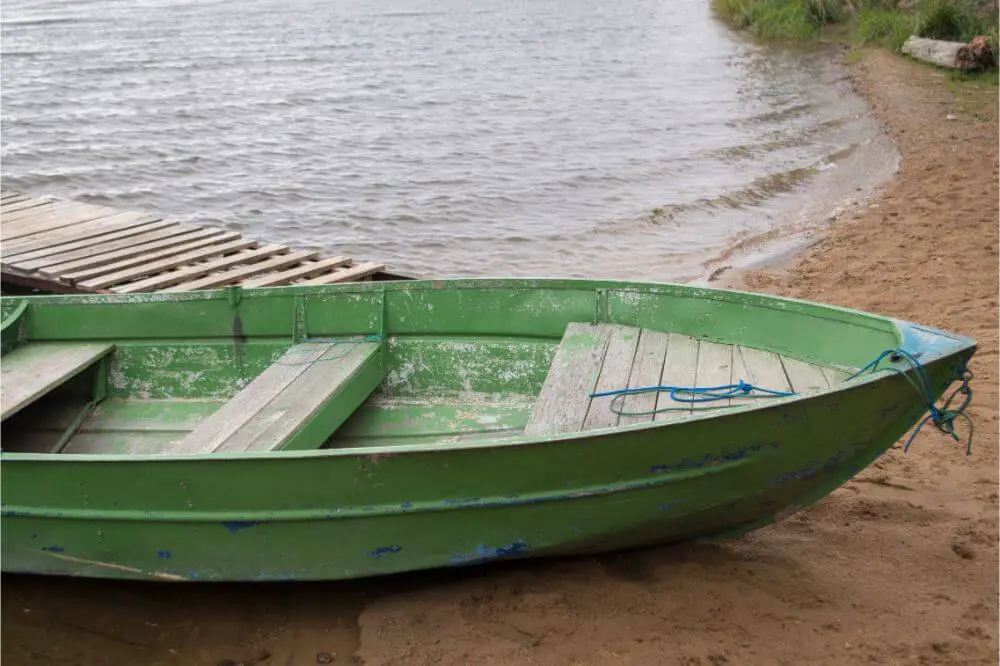A decent aluminum vessel can lead to many happy memories. It can be modest, truly steady, and it can age well. All of this makes it perfect for angling if it is appropriately kept up. Be that as it may, many of these aluminum boats don’t come with a casting deck, which is important for many reasons. So, how does one build a casting deck in an aluminum boat.
These decks make a decent open space, which enables you to cast unhindered. It will likewise raise you higher over the water level to give you a superior perspective on your environment.
In this article, we will be talking about how to construct a sturdy and reliable casting deck for your aluminum boat. Of course, if you want to know how to build a casting deck in an aluminum boat, that is always an option, too. Check out the My Boat Plans website.
What is a Casting Deck? And Why Do I Need One?
A casting deck, whether in the front or back, is a level surface that enables you to fish from a boat without hindrance. Forward decks will perhaps have a seat mount alongside a rail constructed for security.

How to Build a Casting Deck in an Aluminum Boat
Now that you have an idea of why you should build a casting deck, all that is left is to actually build one. Here are the steps you should take to build a nice casting deck for your aluminum boat…
Measure
Before you begin, you should measure your boat so that you are aware of how large the deck will need to be. These measurements can be general, as you simply need to get an idea of the number of materials you will require. To do this, measure the largest section of your boat where your deck will be. This will, in all probability, be the width of the front seat or center seat contingent upon how large you need your deck to be. At that point, measure from the seat to the front of the vessel.
Design
The simplest method to do this is to measure the length of the front seat to the bow. Utilize this to draw a trapezoid on the cardboard and cut it out. It won’t make any difference if there is a hole on the sides, as these will be filled later. Fit the cardboard into the open hole with little bits of free cardboard. When you are content with the fit, you can tape these segments to the enormous bit of cardboard to make a precise layout.
Cut
Place the layout onto the compressed wood sheet and draw the outline. You are now able to start cutting the board. Utilize a saw of your choice so you can make smooth cuts. When the board is cut, you can use a sander to smooth out any jagged edges. You can also sand down the entire deck so that it does not snag the carpet when mounted.
Build
When the deck has been removed, you can start constructing the casing. You should keep the casing as light as possible, as you would prefer not to add any extra weight to the front of the boat.
Right off the bat, you will need to outline the underside of the deck. The game plan of this casing relies upon the design of your boat, the hatch size, and the separation between seats on the deck. You will need to screw down a board on the deck. This will prevent the deck from sliding around.
To do this, measure from the front of the vessel to the front of the seat. Then, transfer this measurement over to the underside of the deck board and screw the boards onto the deck. Make sure that the screws are flush with the deck.
Next, you will need to begin working on the casing. This should be done by drawing out the edge on the underside of the deck board. The thought here is to have a cross shaft no less than every 10 spaces per board.
Contingent upon the range of separation between seats and the size of your vessel, you might need to incorporate a bulkhead. This will help distribute some of the weight throughout the boat. The bulkhead can be created by using the cardboard strategy to make a format. You would then be able to screw on a board along the straight edge of the bulkhead, as this will enable you to then fit it to the deck.

Treating
The next step is to treat the wood. Apply a couple of layers of marine sealant to the wood and ensure that everything is secured. Cut out the floor covering with a couple of inches extra. Then, you will staple the floor covering down in a couple of spots and test it to ensure that it fits comfortably and doesn’t move.
Placement
Drill the mounting holes straight through the pressed wood and the seat. This will enable you to introduce fasteners rather than screws. This is important so that you can simply detach the screws if needed. Making this inclusion in your design will allow for any future advancements, including adding a motor or a casting chair.
Following this guide to building a casting deck will take very little effort and limited materials. This small adjustment to your boat can change your whole lake experience.
Final Thoughts
Having a good casting deck can help improve your fishing game by leaps and bounds. The above steps are some of the easiest ways to manufacture a casting deck on an aluminum vessel. With a little work and dedication, your aluminum boat can be enhanced.
This guide is a great way to start, but there are so many other boat plans and additions that can be done. Be sure to check out the ones found at the My Boat Plans website. Make sure you take your time and look through all your options so that you choose the right method of improving your boat.
For more helpful information about boat building, drills, and saws, check out Boat Diaries’ blog section today.



H there
I as just wondering if you could please give me some helpful advice on how to build a type of fishing or casting deck on my 22ft colvic sea worker. but I want a raised one off the stern or the back of my boat. and take the main holders off the transom of the boat to take the bulk of the weight of people using th deck. these would be made from stainless steel or similar product. but he main deck beams would be made of something like 4×2 or 6×2 timbers treated s that it does,nt rot away. and then I will use thick marine plywood for the main floors then using a non slip paint on the main floor of the new deck to avoid any accidents happening. and of course I will also add some safety rails with safety strap holders welded or bolted on to the hand rails of the deck. but this is only my thoughts on how to build this deck. but if possible I would like some help or advice on how to go about this, but most importantly safety must come first as you will know !
so this would have steps going from the main deck at the back of my boat up to the same height as the top of the transom of the boat. I hope you can understand what i am trying to say. but if you could please give me any tips on the best and safest way to carry out this project it would be much appreciated.
Thank you
any fees back would be very much welcomed !
TEL. 07533985553)
Hello and welcome! We hope you’re liking the blog section of Boat Diaries :). Unfortunately, we’re not that experienced in the area that you are trying to accomplish. We strongly suggest that you get in contact with a metal fabricator as they may be of more help in this matter.